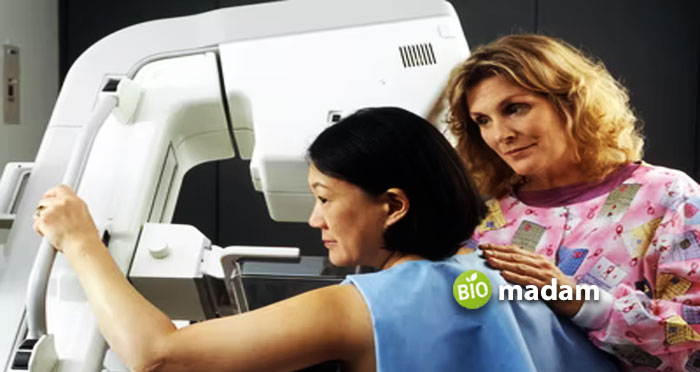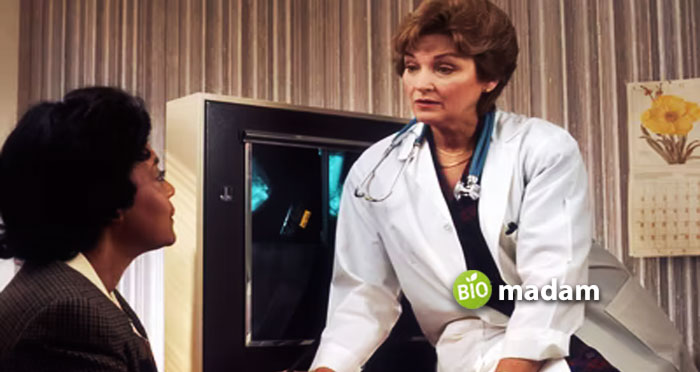When speaking about diseases like cancer, the most important factor to have in mind in the treatment process is early detection. In order to detect early signs of breast cancer, doctors must conduct screenings, which is the only way to discover lumps or any unusual changes in tissues. In breast cancer detection, an ultrasound is usually not used as a primary diagnostic tool since it cannot verify microcalcifications, such as calcium deposits that are often considered as an early sign of breast cancer.
Ultrasounds are useful to detect further changes that occur in tissues, which is usually needed by the physicians if any abnormalities are detected on a mammogram. However, it’s not a matter of which is better as a diagnostic or detection tool, it’s rather what’s right for each case. Read through our article to know why breast ultrasounds are used and when you should have a mammogram instead.
Mammogram Imaging
A mammogram is an x-ray imaging tool that is commonly used by physicians to detect early signs of breast cancer. In some cases, mammography detects breast cancer before any noticeable tumors occur. Women with a higher risk of suffering from breast cancer, especially after the age of 40, should undergo mammogram imaging regularly for early detection of breast abnormalities. A mammogram works differently than the normal x-ray machines, the breasts are flattened and compressed by plates that spread the breast tissues for better diagnosis. The images captured by the mammogram are extensive and radiologists can easily discover any unusual deformities.
Ultrasound Imaging

Breast ultrasounds are an imaging tool that uses sound waves to look inside breast tissues and capture images, which detects any breast abnormalities. During this process, the technician holds a traducer, something like a wand, and passes it over the breast during the examination process. The traducer works by sending waves bounced off the breast, these waves travel back to create the image. Ultrasounds do not use radiation; you can go through this website for further information about safety measures. In some cases and health conditions, pregnancy mammograms and other radiation-based images are not recommended. The only safe diagnostic tool that can be used in these situations is going to be ultrasound imaging.
Key Differences
Ultrasounds are a safe and painless screening tool that does not involve any radiation. It uses high-frequency waves transmitted by a transducer and converted into images. It detects if the breast is charged with fluids or cysts, or any other solid object that can be a lump. An ultrasound can not replace the need for mammography but is rather used to follow up after a mammogram screening detects breast abnormalities.
It is beneficial for monitoring any changes in tissues or other significant developments. Mammogram screening has a reduced dose of radiation that helps capture images that are very detailed. A mammogram is a different type of x-ray that uses plates to flatten tissues of the breasts, which helps in the early detection of breast cancer, especially in women with thick breasts.
Does an Ultrasound Substitute for a Mammogram?
Well, the answer is usually no. Ultrasounds are very useful tools to receive extra features of the infected area to determine whether it’s a benign lump or suspected of being cancer. The reason why ultrasounds can not be a substitute for a mammogram screening is that they can possibly miss microcalcifications and smaller tumors that are usually detected by mammography. In most cases of having an abnormal mammogram, it’s usually recommended to have an ultrasound or any other additional diagnostic examination. It is not only confined as an additional screening tool, it is sometimes used by physicians when undergoing a biopsy to guide the needle to the infected spot.
Which is Right for You?
If one treatment or means of diagnosis is right for someone, it doesn’t have to be perfect for you. There are several factors in addition to your health care provider deciding what’s right for your case. The first thing is the age of the person, as women under 30 are preferably recommended to undergo an ultrasound for their breast check-up rather than a mammogram.
However, physicians might prefer a mammogram if there’s a family history involved. Another significant factor is weight, women who suffer from obesity or happen to have large breasts are usually asked to undergo a mammogram to get clear and more detailed images of breast tissues. In some cases, it is risky to perform any type of x-rays, in these conditions, health providers may perform an ultrasound.

Breast cancer can be experienced at any age. If you feel any unusual changes or abnormalities, they must be reported immediately to your health care provider. Early detection and diagnosis saved the lives of several women, especially those who have a family history. Breast cancer is easily treated and cured if detected ahead of time, however, there’s no right age to perform breast screening, it usually depends on your condition and the doctor’s decision. Unless there’s a family history or suspicious symptoms, women under the age of 40 are not asked to perform any type of screening.

Hi, they call me Jenna, and I am also known for achieving a gold medal during my Ph.D. in science life. I always had a dream to educate people through my utmost writing hobby. So, I chose this blogging path, and Biomadam gave me this opportunity to present for them. I now stand to entertain you. Continue reading my articles & discuss if you’ve any confusion through the comment section below.

